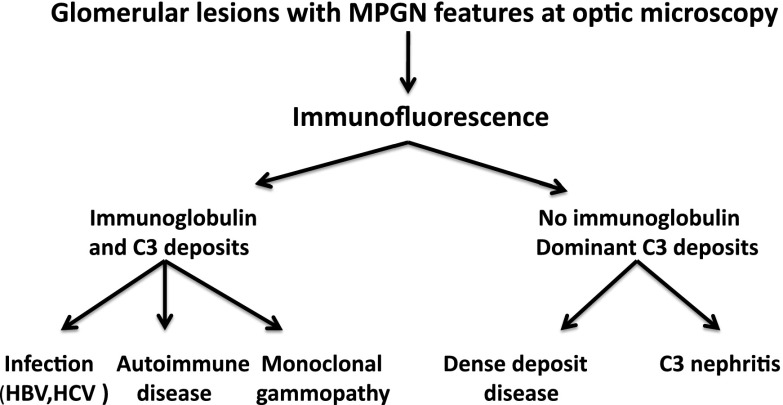Figure 1.
Glomerular lesions with membranoproliferative GN (MPGN) features at optical microscopy are today classified according to the results of immunofluorescence studies. Cases with glomerular deposition of Igs (IgG or IgM) are caused by circulating Igs or immune complexes and associated with other pathologic diseases, such as hepatitis B virus (HBV) or hepatitis C virus (HCV) infection, autoimmune diseases (systemic lupus erythematosus), or monoclonal gammopathy, including myeloma. In these cases, complement is frequently activated by the classic pathway. Cases without or with faint deposits of Igs are characterized by dominant deposits of C3. These cases are usually caused by congenital/hereditary mutations or acquired inhibitors (e.g., autoantibodies or monoclonal proteins) of factors regulating the alternative pathway of complement cascade. These latter disorders are called C3 glomerulopathies and can be subdivided into C3 GN and dense deposit disease according to electron microscopy findings.

